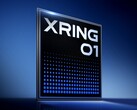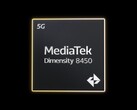With the XRing O1, Xiaomi has entered the fiercely competitive segment of mobile processors. Xiaomi aims to compete with the fastest SoCs on the market, such as the Qualcomm Snapdragon 8 Elite and the MediaTek Dimensity 9400. The Xiaomi 15S Pro and Xiaomi Pad 7 Ultra are the first devices featuring Xiaomi in-house ARM chipset, and both have arrived for our review.
The XRing O1 is expected to offer flagship-level performance, which is not implausible given its architecture. Xiaomi opted for two Cortex-X925 Prime cores with boosted clock speeds of up to 3.9GHz. In comparison, the MediaTek Dimensity 9400 only has one X925 core. Furthermore, the CPU features six Cortex-A725 cores clocked at up to 3.4GHz, ensuring a good balance between performance and power efficiency. For less intensive tasks and better battery life, two Cortex-A520 cores run at 1.8GHz. TSMC manufactures Xiaomi’s chipset via its second-generation 3nm process.
Xiaomi Xring O1 has really good CPU performance
In Geekbench, we hit a single-core score of almost 3000 points, which is slightly below Qualcomm Snapdragon 8 Elite-powered smartphones, such as the Xiaomi 15 Pro. We enabled the performance mode in HyperOS on the Xiaomi 15S Pro for this benchmark. The Pad 7 Ultra scored slightly lower, though its software only offers a balanced power mode. A similar trend can be seen in multi-core benchmarks.
Since NPU performance becomes increasingly important in smartphones and tablets, we also used Geekbench AI for our comprehensive review procedure. Comparing the Xiaomi processor to the Snapdragon 8 Elite, we got very similar scores for the XRing O1. Also, there are hardly any differences between the Xiaomi 15 Pro and 15S Pro in this regard.
More benchmarks will follow shortly. Whether the XRing O1 can sustain its performance or if Xiaomi's first chipset might have a heat and throttling issue will be clarified in our in-depth reviews of the Pad 7 Ultra and 15S Pro, which will be published soon.
| Geekbench AI | |
| Quantized TensorFlow NNAPI 1.2 | |
| Xiaomi 15 Pro | |
| Xiaomi Pad 7 Ultra | |
| Xiaomi 15S Pro | |
| Samsung Galaxy S25 Ultra | |
| Half Precision TensorFlow NNAPI 1.2 | |
| Xiaomi Pad 7 Ultra | |
| Xiaomi 15 Pro | |
| Xiaomi 15S Pro | |
| Samsung Galaxy S25 Ultra | |
| Single Precision TensorFlow NNAPI 1.2 | |
| Xiaomi Pad 7 Ultra | |
| Xiaomi 15 Pro | |
| Xiaomi 15S Pro | |
| Samsung Galaxy S25 Ultra | |
Source(s)
Notebookcheck's upcoming reviews of the Xiaomi 15S Pro and Pad 7 Ultra












